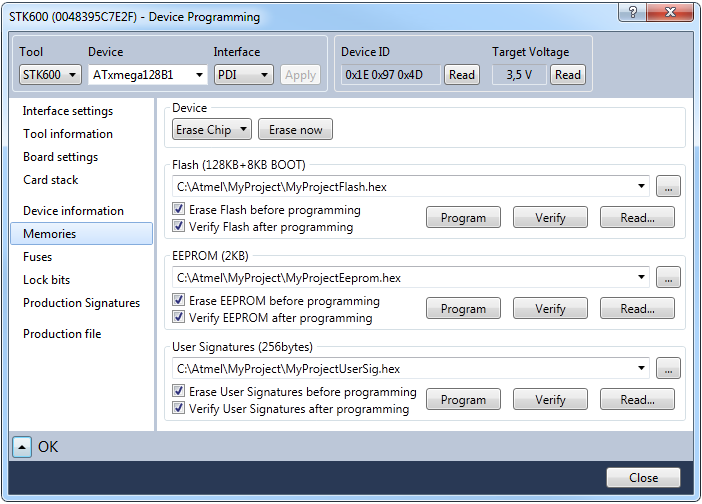
From the Memories tab, you can access all the programmable memories on the target device. Memory is erased by first selecting the memory type and then clicking on the Erase button. Selecting Erase Chip will erase the entire contents of the device, including FLASH, EEPROM (unless the EESAVE fuse is programmed), and lock-bits, but not Userpages if the device contains this.
Program
To program a file into the device's Flash memory, write the full path and file name in the combo box in the flash section. Or, select the file by pressing the browse button (...).
Now, press the Program button to program the file into the memory.
If the Erase device before programming checkbox is checked, a chip erase operation will be performed before the programming operation starts.
If the Verify device after programming checkbox is checked, the content will be verified after the programming operation is done.
Some devices can also be programmed through a flashloader. This is mainly an advanced technique, but it will usually give a significant speedup in the programming speed. For devices where this is supported, a checkbox named Program flash from RAM will be shown. If this box is checked, the base address of the location of the flashloader needs to be given.
Verify
To verify the flash content of the device, first, select the file you want to verify against, then, press the Verify button.
Read
The contents of the Flash memory can be read out in Intel® hexadecimal file format, using the Read button. Pressing the Read button will bring up a dialog offering you to specify where the file will be saved.
EEPROM
The device's EEPROM memory can be programmed in a similar way.
User Signatures
The XMEGA device's User Signature memory can be programmed the same way.